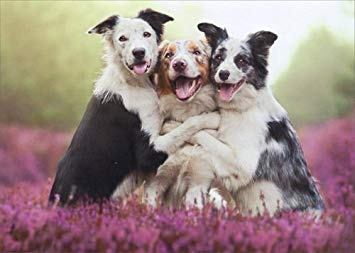After their massage therapy session, one of my clients recently said: This is going to sound weird but I feel like I just got a really good dose of oxytocin.
I love that they said that and it made total sense. But it also left me thinking about where the average adult—at least here in the Northeastern parts of the United States—gets theirs… It’s my impression that most people are rather low on steady and reliable sources for oxytocin.
What is it, anyway?
Oxytocin is the bonding, compassion/empathy and trust hormone. It’s released by the pituitary gland. (It is naturally higher than average in pregnant women and new moms.) Oxytocin is known for modulating fear and anxiety. It can have anti-depressant-like effects and has been shown to increase empathy and trust. It is also thought to modulate inflammation and help in wound-healing. Whoa. That’s quite a list, isn’t it?!

Where do you get yours?
Oxytocin-deprivation
I once had a client who began to cry after I finished my therapeutic massage work on their face. (It’s not an unusual thing for me to touch and work on people’s faces, if OK with them. A lot of tension can be held in the jaw, cheeks, temples, behind eyes.) I checked in with them and they told me that they were OK, just feeling moved. After the session they told me it’d been years since anyone had touched their face. I’d guess that this person statistically represents many people.
So how can we up our Oxytocin levels in our here and now lives?
Oxytocin-boosting
I found a lovely list of suggestions for upping Oxytocin in an article by Paul Zak in Psychology Today. (Zak is a researcher in the neuroscience of human connection).
Here are a few of my favorites from Zak’s list::
Listen with your eyes. Instead of being glued to an electronic device, give the person with you your complete attention. Watch their face and listen to what he or she [or they] is [or are] telling you.
Give a gift. Our first human oxytocin studies showed that receiving gifts raised oxytocin. Why not make this a regular practice? The key is not to expect a gift in return, just surprise someone for no reason.
Share a meal. Eating moderately is calming and helps us bond with others.[…] You can increase the effect by […] making the meal you share a gift.
[This one surprised me (Heidi)…] Ride a roller coaster or jump out of an airplane. Many activities that are moderately stressful and done with one or more other people raise oxytocin. My recent tandem skydive produced a greater than 200% oxytocin spike. Try being a single rider on a roller coaster and you’ll experience an immediate bond with the person next to you.
Pet a dog. This doesn’t always work unless the dog belongs to you, but if you identify as a “dog person,” any old dog will raise your oxytocin. The dog won’t complain, either. And once your oxytocin is up, you’ll connect better to the humans around you, too.
Use the “L” word. Tell those around you that you love them. Oxytocin is the love molecule so it is part of our evolved biology to love others (both “philia” and “eros”). You’ve got to put it out there to get it back. With friends, too, and maybe even at work.
Eight hugs a day. We have shown that touch not only raises oxytocin, but it reduces cardiovascular stress and can improve the immune system, too. Try telling people that you hug rather than shake hands and see what happens when you give others the gift of oxytocin.
Speaking of the “L” word and speaking of touch, as a massage therapist I love doing my part in upping oxytocin levels in the world. Maybe it’s a little bit of mothering I can offer without actually being a mother myself. (And that, right there, is an oxytocin-boosting thought for me.)
Now, go hug your pet. Or your partner. Or your kid. Or… And feel free to add a comment with any of your own feel-good, comfort-building, oxytocin-boosting favorites. I’d love to hear!
Leave a Reply